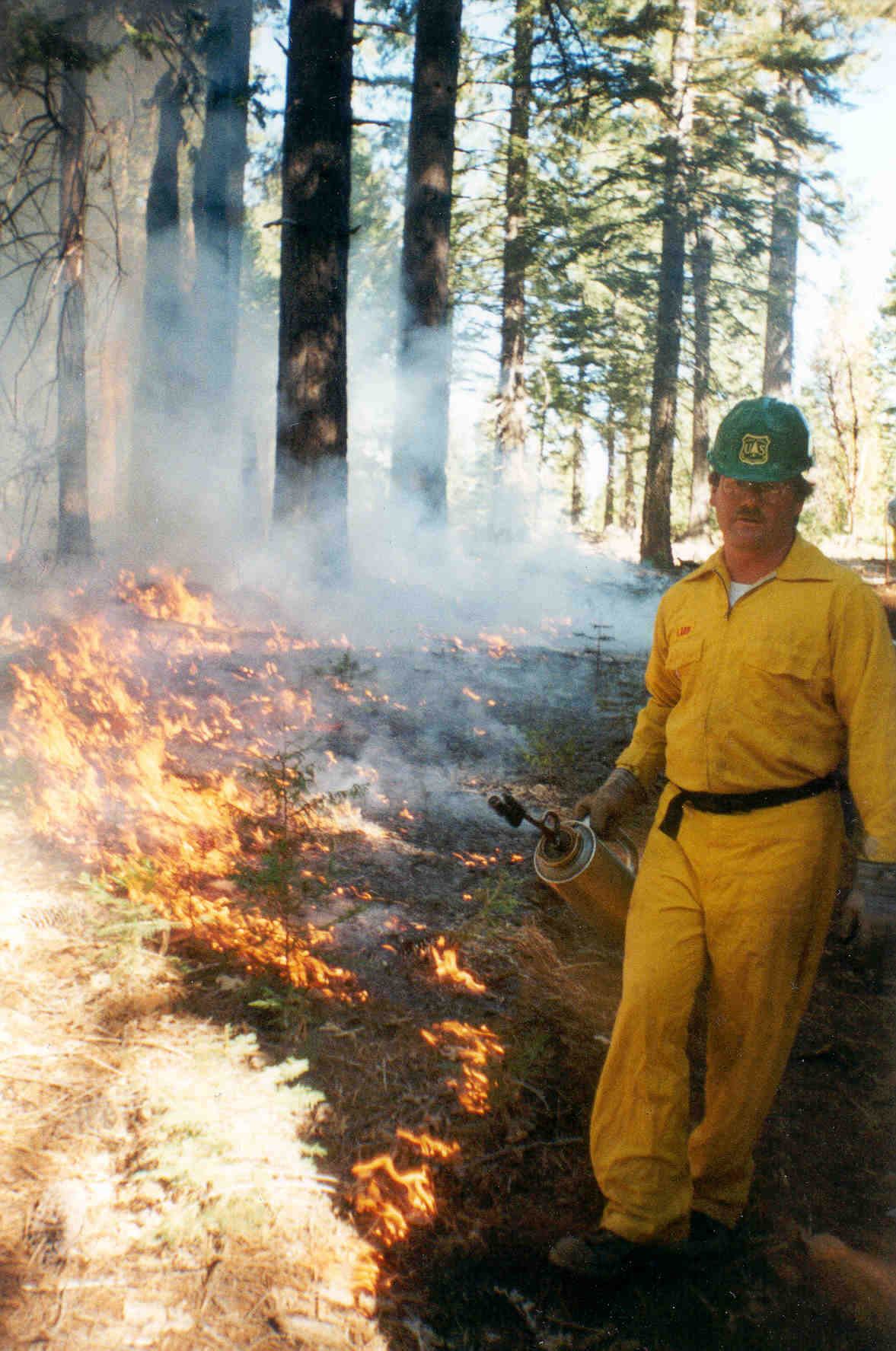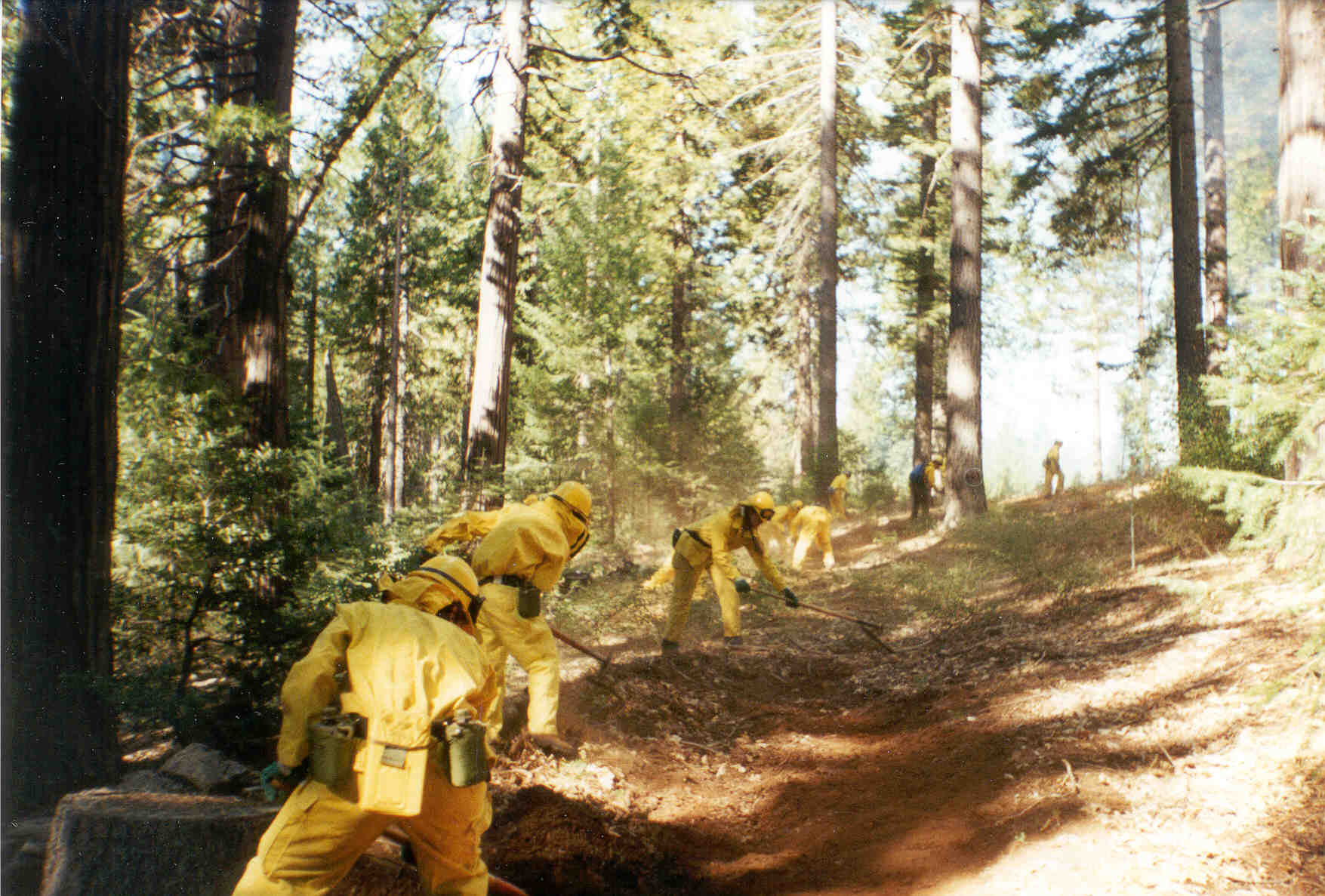 rstory burn at
Blodgett Forest.
rstory burn at
Blodgett Forest.Prescribed burn at Blodgett Forest on September 30th, 2000 a success....
Along with Dr. Scott Stephens,
members of the Blodgett Forest Research Station full time staff, the U.S.
Forest Service, and a "Forest Operations" undergraduate class
participated in a 1/2 acre unde rstory burn at
Blodgett Forest.
rstory burn at
Blodgett Forest.
The planned burn unit was approximately 1 acre in size and located in a shaded fuel break. The burn unit had a south aspect with average slopes of 15%. Average diameter of overstory trees was 24.0 inches with 50 overstory trees per acre. The understory averaged 1150 trees per acre from 1 to 20 feet in height. Fuel loading averaged 6.5 tons per acre with the majority of fuels (by weight) in the 1000-hour fuel class.
The prescribed conditions for burning included 10-hour fuel moistures of 9%-12%, relative humidity ranging from 45% to 60%, air temperatures less than 70(F), and winds less than 5 mph from the southwest or northwest.
Prescription parameters were measured the prior to ignition and found to be within prescription. A small portion of the burn unit was ignited at 0920 and allowed to burn. After observation of fire and smoke behavior, the decision was made to continue ignition. The rate of spread at this time was ~2 chains per hour with up to 6-foot flame lengths. Smoke continued to vent 200 feet high and to the west until 1120 when winds shifted and smoke started to vent towards the south and southwest. By 1120, conditions became less favorable in terms of relative humidity and air temperature and the decision was made to stop ignitions. The unit was cut off by a fireline constructed by forestry and resource management students from the "Forest Operations" class and the unit allowed to "burn out". At 1330, mop-up was initiated and by 1510, mop-up was complete.
In general, fire behavior and
smoke emissions were desirable throughout the entire burn. Visual estimates at
least 50% consumption of surface and ground fuels. Approximately 80% of trees
less than 3 feet in height appeared to have experience adequate scorching
and/or cambial heating to incur mortality within the next 2 years. Understory
trees in the greater than 3 feet in height did not experience as much crown
scorching though may have had adequate heating of the cambium to lead to
future mortality. Overstory trees (greater than 12 inches in diameter at
breast height) experienced bole scorching to heights of 7 feet.
Overall, this small burn reduced fuel loading locally and may lead to mortality of seedling less than 3 feet in height. Mortality of these seedlings is a desirable outcome because it helped reduce the "crop" of future ladder fuels. In conclusion, this burn was a success in terms of fire behavior and emissions- larger burns should be targeted in the future.
